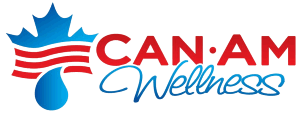Written by: Husna Sultana
In the 1970’s, photocatalytic technology was used in space technology laboratories, specifically NASA for both air and water purification. NASA has employed photocatalysis for purifying water during space missions and in their space grown plant chambers to eliminate rot-inducing chemical ethylene!
- How does Photocatalytic air purification work?
In air purifiers photocatalysis works in a way that the light energy kick-starts a process that kills the air pollutants and turns them into harmless substances. In photocatalytic air purifiers, the catalyst that cleans the air is titanium dioxide (TiO2) and it is irradiated by ultraviolet (UV) light.
Titanium dioxide is a semiconductor. Only a thin film covering of titanium oxide is needed on the surface of a backing material called a substrate, which is usually made from ceramic or a piece of metal.
Let us have a closer look at the Photocatalytic Oxidization (PCO) process:
- A metal surface coated with a titanium dioxide is irradiated with UV light to produce hydroxyl radicals, which are highly reactive, short-lived, uncharged forms of hydroxide ions (OH−). and super-oxide ions.
- The hydroxyl radicals and super-oxide ions then attack bigger organic (carbon-based) pollutant molecules, breaking their chemical bonds and turning them into harmless substances such as carbon dioxide and water. This is an example of oxidation.
- For maximum efficiency, the process requires a sufficient surface area of reflective metal coated with a metal oxide to be positioned at a critical distance from the UV lamp while still allowing a good flow of air to bring the airborne chemicals into contact with the resulting hydroxyl radicals and super-oxide ions.
Does photocatalytic oxidation create ozone and other by-products?
When choosing a photocatalytic system, it is important that no by-products are produced. There are many factors that influence the efficiency of a PCO device. Engineers must consider how much light is falling on the catalyst, what types and concentrations of pollutants the device is expected to deal with, the flow of air through the device, moisture and humidity levels in the air, properties of the specific catalyst used, and how the device itself is configured.
CanAm Wellness air purifiers are a true representation of NASA technology and employs a localised process.
The California Air Resources Board (CARB) does not allow air purifiers to be sold in California that produce unsafe levels of ozone, so its important to ensure the PCO system is listed as CARB compliant on the CARB website. The Model 2000 air purifier has been certified as CARB compliant
- How is Photocatalytic air purification different from a UV Air purifier or a Carbon air purifier?
UV light is a key ingredient used in the photocatalytic process to activate the catalyst (TiO2) to begin the chemical reaction to break down the pollutants. CanAm Wellness patented TitanClean™ technology developed by NASA dramatically increases the range of chemicals that can be adsorbed while a medical grade SUPER HEPA filter provides powerful particle reduction of 99.97%of particulate matter as small as 0.1 microns including PM2.5, pollen, dust, dander.
Photocatalytic oxidization augments the germicidal effect of the UV light and enhances carbon filtration. It is recommended for highly toxic environments with Individuals with suppressed immune systems, the elderly, and very young children.
